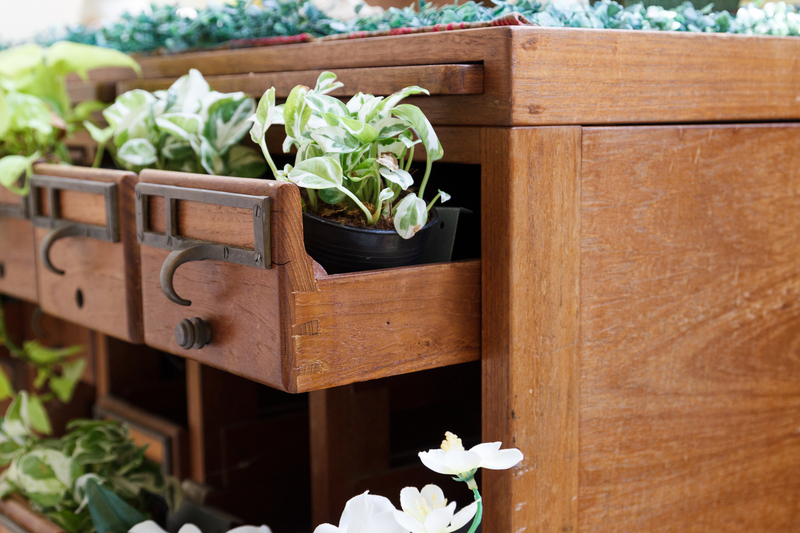Art from the Unexpected: Brilliant Upcycles of Everyday Objects
Creativity flourishes where society least expects it. This is no more evident than in the world of art from the unexpected upcycles of everyday objects. What started as a form of eco-friendly innovation has evolved into a full-fledged art movement, capturing the imagination of artists and viewers alike. In this comprehensive guide, we delve into the world of upcycled art, exploring how discarded materials are transformed into masterpieces and why this trend is redefining what it means to create--and appreciate--art.

What is Upcycled Art?
Upcycled art refers to the practice of taking everyday objects--often considered trash or no longer fit for their original purpose--and transforming them into creative artworks. Unlike recycling, which breaks materials down for industrial reuse, upcycling retains the original forms, offering a unique visual connection to the object's past life.
Common upcycled objects include:
- Plastic bottles and containers
- Disused furniture
- Metal scraps and hardware
- Old clothing and textiles
- Discarded electronics
- Paper and cardboard
Why Upcycled Art is Gaining Popularity
1. Environmental Awareness
As awareness of environmental issues intensifies, individuals and communities are more committed than ever to reducing waste. Upcycled art provides a creative platform to promote sustainability, drawing attention to the vast quantities of reusable materials discarded daily. Artists are utilizing their works to spark conversations about recycling and resourcefulness, inspiring others to consider how they, too, can turn trash into treasure.
2. The Allure of the Unexpected
There's a thrill in seeing something familiar reborn in an unfamiliar context. Brilliant upcycles of everyday objects transform the ordinary into the extraordinary. Imagine a chandelier made from plastic spoons, a portrait fashioned from typewriter keys, or a sculpture created from old bicycle parts. These unexpected masterpieces captivate audiences, fueling curiosity and creativity in equal measure.
3. Accessibility and Affordability
Art materials can be costly and sometimes prohibitively so. Through upcycling, artists with limited budgets or resources can create stunning works with little more than found objects and ingenuity. This democratization of art fosters inclusivity within the creative community and opens doors for experimentation and innovation.
Iconic Examples of Upcycled Art
The upcycled art movement is as diverse as its creators. Here are some famous artists and projects that have pushed the boundaries of creativity:
- Vik Muniz: Known for recreating iconic paintings using materials like chocolate syrup, sugar, and even garbage, Muniz explores the intersection of materiality and image.
- Ha Schult: His "Trash People" project features life-sized figures sculpted entirely from discarded cans, circuit boards, and wires, exhibited in iconic locations worldwide.
- Jane Perkins: Perkins crafts vibrant portraits using buttons, beads, and everyday plastics, proving that fine detail can emerge from the most unexpected items.
- Bordalo II (Artur Bordalo): A Portuguese artist famed for massive animal installations made from urban waste, bringing awareness to environmental issues through powerful visual impact.
- Michelle Reader: Her upcycled sculptures often depict fantastical characters, each piece meticulously composed from recycled materials.
Each of these artists embraces the philosophy that art need not be bound by convention or expensive materials--only by imagination and intent.
Techniques and Approaches to Upcycling Art
Assemblage and Sculpting
One of the oldest and most common upcycling methods in art, assemblage involves piecing together disparate objects to form a cohesive whole. Artists often combine elements through welding, gluing, or bolting, creating statues, installations, or mixed-media works.
Collage and Mixed Media
Collage is a natural fit for upcycled art forms. By layering paper, fabric, plastics, or electronic parts, artists construct vivid scenes or abstract compositions. The resulting texture and depth add richness not attainable through traditional two-dimensional media.
Textile Transformation
Old clothes, linens, and tapestries find new life in textile-based upcycled artworks. From patchwork quilts to fabric sculpture, the tactile nature of these pieces evokes nostalgia and comfort, all while reducing landfill burden.
Reinvented Functional Art
Upcycled functional art takes ordinary objects and gives them a new purpose. Think: bike chains turned into clocks, wine bottles repurposed as lamps, or pallets converted into coffee tables. These works balance visual artistry with practicality, merging form and function.
How Upcycled Art Impacts Society
Redefining Value
Modern society often equates value with novelty and cost. Upcycled art challenges this paradigm by showing that creativity and worth can be found in the overlooked and discarded. This shift re-contextualizes our relationship with consumer goods and encourages a cultural shift towards resourcefulness.
Empowering Local Communities
Community art projects built on upcycling have sprung up around the globe. These initiatives bring neighbors together, beautify public spaces, and provide education on sustainability. In schools, upcycled art workshops encourage students to think critically about consumption and environmental impact.
Fostering Innovation
Limitations often fuel invention. Forcing artists to work with nontraditional materials fosters creative problem-solving and risk-taking, leading to artwork that is both visually striking and intellectually stimulating. The unexpected upcycle often results in a conversation piece that both challenges and delights viewers.
How to Start Creating Art from Everyday Objects
1. Find Your Inspiration
Begin by taking stock of what's around you. The first step in upcycling art is embracing a mindset that sees potential in the everyday. Ask yourself:
- What items do I regularly discard?
- Which materials have interesting textures, colors, or shapes?
- How might these objects be repurposed as elements of art?
2. Gather Materials Safely
Not all found objects are safe to use in art. Be mindful of hazardous materials or sharp edges. Wash and disinfect items when possible, especially when working with plastics, glass, or metal. Organize your materials by type; this makes the creative process smoother and more enjoyable.
3. Experiment with Techniques
Try combining basic art techniques with upcycled materials:
- Paint on old book pages or newspapers
- Weave plastic bags into baskets
- Assemble sculptures from scrap metal or wood
- Create mosaics using broken tiles or CDs
4. Tell a Story
Many successful upcyclers create work that communicates a message about the origins of their materials or broader social issues. Consider incorporating narrative elements into your creations. Share the history of the items you used or highlight the environmental impact of upcycling on your community.
5. Display Your Creations
Whether it's in your home, a local gallery, or an outdoor installation, let your work serve as a conversation starter. Social media platforms like Instagram and Pinterest are excellent for sharing pieces and networking with fellow creative minds globally.

Tips for Aspiring Upcycled Artists
- Stay curious: The best upcycled art arises from an open mind and a willingness to experiment.
- Collaborate: Join local art collectives or online communities to exchange ideas and gather feedback.
- Educate others: Hosting workshops or leading community projects magnifies the impact of upcycled art.
- Document your process: Take photos or keep journals to track how your techniques evolve over time.
- Sustain momentum: Continue collecting and creating to keep your practice (and your message) alive.
The Future of Upcycled Art
As society grapples with challenges such as waste management, climate change, and overconsumption, brilliant upcycles of everyday objects offer hope for a more creative and sustainable future. Beyond the environmental benefits, these works remind us of the boundless possibilities inherent in reimagining the ordinary.
In a world flooded with mass-produced art and decor, upcycled creations stand out for their ingenuity, originality, and impact. What once was overlooked as rubbish is now celebrated as a work of art, redefining not only materials but mindsets.
Final Thoughts
The art of upcycling underscores the power of transformation. If you're seeking fresh inspiration or a way to reduce your own environmental footprint, look no further than the materials at your fingertips. Through upcycled art, the unexpected becomes possible--the only limit is your imagination.
Are you ready to make your own masterpiece from the unexpected upcycles of everyday objects?
